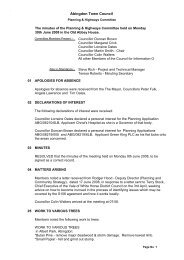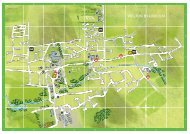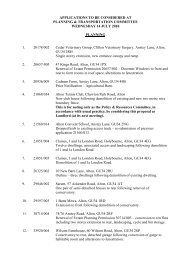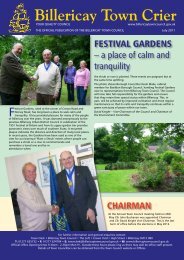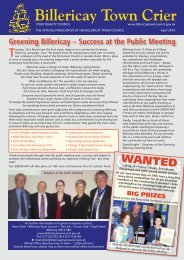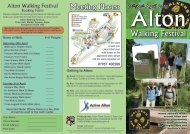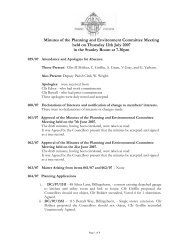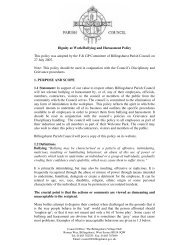Q - Vision ICT Ltd
Q - Vision ICT Ltd
Q - Vision ICT Ltd
Create successful ePaper yourself
Turn your PDF publications into a flip-book with our unique Google optimized e-Paper software.
Focus on History<br />
Q<br />
The Timber-Framed Development of<br />
the town of Billericay<br />
By David Bremner<br />
There is ample evidence for accepting the<br />
continuous existence of the occupation<br />
of the area known as “Billericay”, Essex,<br />
since the Stone Age. There are enough physical<br />
artefacts and archaeological evidence to indicate<br />
that there were people occupying the hill now<br />
known as Billericay, since before pre-history.<br />
Billericay is one of the few lofty prominences,<br />
being over 300 feet high, in the otherwise flat<br />
landscape of the East Saxons or Essex. Such a<br />
site is an obvious place to choose for getting a<br />
good vantage point from which to view the<br />
surrounding land.<br />
Archaeological Evidence<br />
A flint hand axe thought to be Mesolithic or<br />
Stone Age, 10,500 to 5,500 BC, has been found<br />
in Norsey Wood. The main ride or pathway in<br />
Norsey Wood is claimed to have existed since<br />
the Iron Age c700 BC, when it would have been<br />
used as a track to transport timber.<br />
At this time, the people were hunter-gatherers.<br />
As the hunter-gatherers became farmers during<br />
the Bronze Age, c 1750 to 750 BC, they needed<br />
to cut down trees to make farmlands, fields and<br />
pastures. Farming encouraged the existence of<br />
more permanent settlements. Bronze Age burial<br />
tumuli still exist in Norsey Woods.<br />
The main building materials were wooden posts<br />
with wattle and daub infill for walls and straw<br />
roofing. Any evidence of round houses, except<br />
for maybe posthole pits, will have disappeared<br />
along with the local Celtic tribe known as the<br />
Trinovantes.<br />
With the arrival of the Romans and their greater<br />
building skills, evidence of habitation that is<br />
more tangible exists of their occupation of<br />
Billericay. Excavations at Billericay Secondary<br />
School during 1987/8 revealed traces of Late<br />
Iron Age, c 200 BC, and Romano-British, 43 AD<br />
to 300 AD, occupation.<br />
The military based Romans occupied the high<br />
ground. The farming orientated Saxons, 500 to<br />
800 AD, preferred to make use of the flatter<br />
lands around Billericay, so little building<br />
development took place in Billericay during this<br />
Saxon period. This farming area was known as<br />
“Burghstede”, a Saxon name for a fortified<br />
place.<br />
Building of Billericay<br />
Billericay is an ancient “ribbon” town on a main<br />
north-south road, the B1007, just north of its<br />
intersection with an east-west road, the A129.<br />
The right to hold a market in the Manor of<br />
Great Burstead was granted in 1253 and to the<br />
town of Billericay in 1476.<br />
Buildings constructed in the 1300s, especially<br />
churches, used combinations of flint, Roman<br />
tiles, septaria and pudding stone to build their<br />
walls and wood for their towers due to the lack<br />
of natural stone quarries in Essex. The main<br />
natural building resource in Essex is wood.<br />
The Chantry Chapel, in the High Street was<br />
originally built in 1342 AD, and was then called<br />
St Johns. It was subordinate to Great Burstead,<br />
or Burstead Magna, this farming area having<br />
been more developed due to the use of the land<br />
for agriculture. During this period, only a few<br />
farmhouses were built on the Billericay hillside.<br />
50 Billericay Town Guide



